The Importance of Motorcycle Turn Signals
Motorcycle turn signals are essential for safe riding and legal compliance. They serve as a vital communication tool between riders and other road users. Proper use of turn signals enhances road safety and ensures smoother traffic flow.
Enhancing Safety on the Road
Turn signals let other drivers know your intentions on the road. They help communicate when you plan to turn, change lanes, or merge. This reduces the risk of accidents caused by sudden or unanticipated maneuvers. Without clear signaling, other drivers may not act appropriately to avoid collisions. Using your turn signals consistently builds trust and predictability in traffic.
Motorcycles are smaller than cars, making them harder to notice on the road. Bright and functioning turn signals ensure you stay visible to others. This visibility is especially vital in bad weather, during nighttime, or in heavy traffic. As a rider, signaling your moves adds an extra layer of protection to your journey.
Legal Requirements for Turn Signal Usage
Turn signal laws vary depending on your region or country. Most places mandate the use of turn signals before turning or changing lanes. Some areas even require specific visibility standards for turn signals’ brightness and position. Ignoring these rules can lead to fines or penalties.
In many jurisdictions, motorcycles are legally required to have functioning turn signals. Even if hand signaling is acceptable in some areas, it may not always be effective. Legal compliance ensures your motorcycle remains roadworthy and minimizes risks of legal troubles. Understanding local traffic laws is crucial to using your turn signals correctly and responsibly.
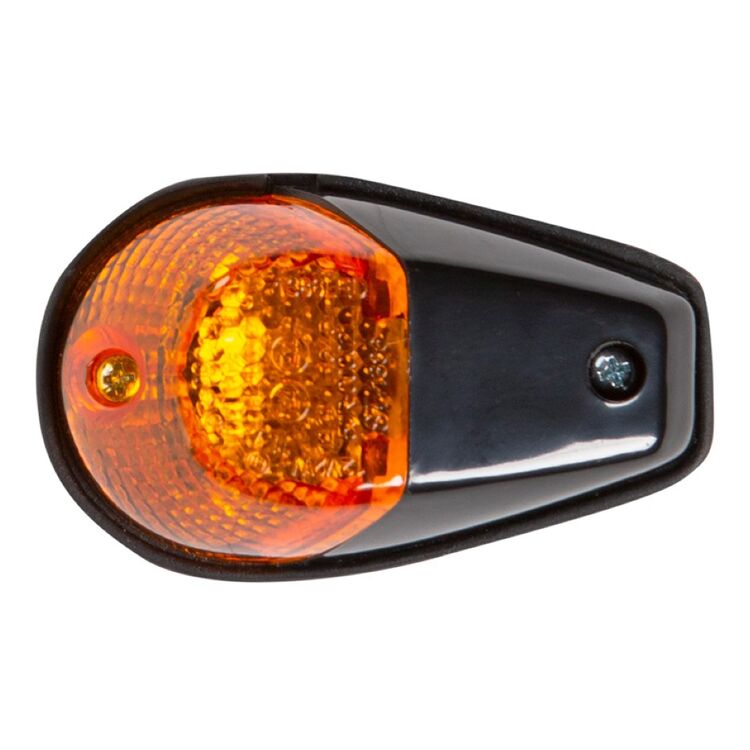
Types of Motorcycle Turn Signal
Motorcycle turn signals come in various types to suit different styles and needs. Each type has unique features and benefits. Choosing the right type can enhance your bike’s look and improve safety.
Traditional Bulb Turn Signals
Traditional bulb turn signals are the classic option for motorcycles. They use incandescent bulbs to produce light. These signals are generally affordable and easy to find. Riders often choose them for a vintage or retro aesthetic.
However, they have some limitations. Bulbs tend to burn out faster than newer lighting technologies. They also consume more power, which can strain your motorcycle’s electrical system over time. Regular maintenance is key to keeping traditional bulb signals functional.
LED Turn Signals
LED turn signals are becoming increasingly popular among motorcycle enthusiasts. They are brighter and more energy-efficient than traditional bulbs. LEDs also last longer, reducing the need for frequent replacements. Their compact design fits well with modern motorcycles.
These signals improve visibility in all lighting conditions, enhancing road safety. They are also available in many styles and colors, making them suitable for customization. While they may cost more upfront, their durability and performance make them a worthwhile investment.
Integrated Turn Signal Systems
Integrated turn signal systems combine multiple functions into a single unit. For example, they may include brake lights and rear turn signals together. This design gives your motorcycle a sleek and streamlined appearance.
These systems are ideal for riders who prioritize aesthetics and functionality. Installation may require professional assistance due to their complexity. They are perfect for reducing clutter on your motorcycle while maintaining high visibility on the road.
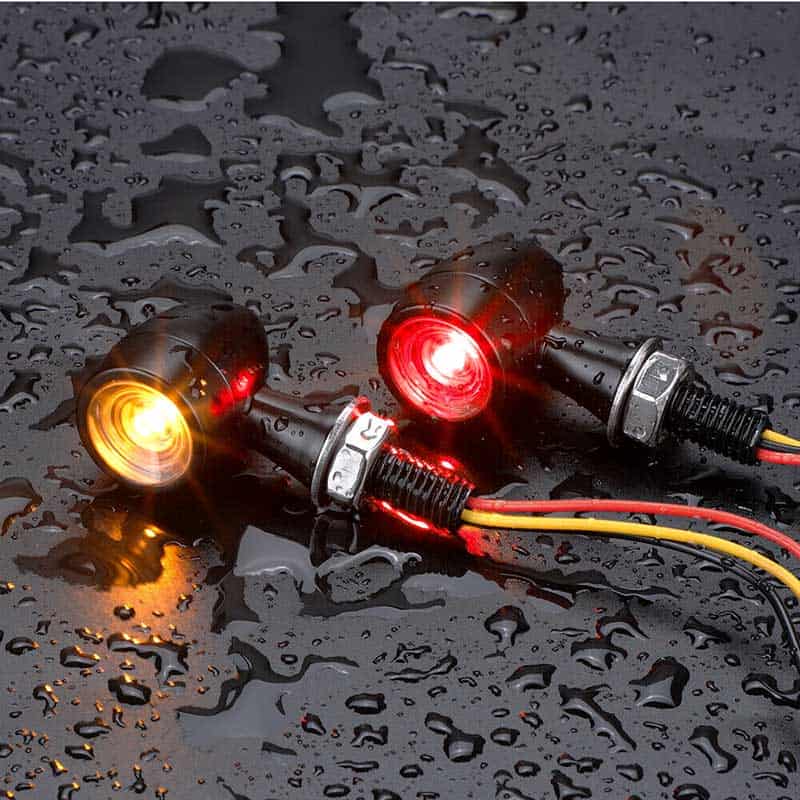
Choosing the Right Turn Signals for Your Motorcycle
Selecting motorcycle turn signals involves balancing style, safety, and functionality. Choosing the right signals improves both performance and aesthetics. Here’s what to consider when making your decision.
Factors to Consider: Style, Compatibility, and Performance
- Style: Turn signals impact the overall look of your motorcycle. Traditional bulb signals suit vintage bikes. For a sleek, modern look, opt for LED or integrated systems.
- Compatibility: Ensure the signals fit your motorcycle’s model and design. Check compatibility with wiring and mounting points to avoid installation issues. Custom bikes may require specialized options.
- Performance: Prioritize signals that offer excellent visibility for maximum safety. LED signals provide better brightness, energy efficiency, and durability. Traditional bulbs may cost less but often need frequent replacements.
- Legal Compliance: Verify that the turn signals meet local road regulations. Brightness, size, and placement requirements vary by region. Compliant signals keep you safe and legally protected.
- Budget: Choose signals within your price range but don’t sacrifice quality for cost. Durable options save money in the long run.
Popular Brands and Options
- Kuryakyn: Known for high-quality LED turn signals and stylish designs. Suitable for various bike models.
- Custom Dynamics: Famous for bright, reliable LED signals. They offer excellent aftermarket customization options.
- Baja Designs: Great for off-road and adventure motorcycles. Their turn signals combine durability with top-tier performance.
- Rizoma: Perfect for riders seeking sleek, minimalist turn signals. They focus on aesthetics without compromising safety.
- Motogadget: Offers innovative, high-tech options like bar-end turn signals. Excellent for advanced customization projects.
Choosing the right motorcycle turn signals enhances safety and complements your bike’s style. Evaluate these factors and explore reliable brands to make an informed decision.
Installation Process for Motorcycle Turn Signal
Installing motorcycle turn signals is an essential process to ensure safety on the road. Proper installation ensures signals function effectively and comply with legal standards. Follow this guide to set up your turn signals confidently.
Tools Needed for Installation
Before starting, gather the necessary tools:
- Screwdrivers: Both flathead and Phillips screwdrivers are commonly needed.
- Wire Strippers: Required for preparing and connecting wiring.
- Electrical Tape: Helps secure and insulate wire connections.
- Wrenches or Sockets: Used for mounting brackets or loosening bolts.
- Multimeter: To test electrical connections and ensure proper functionality.
- Zip Ties: Ideal for organizing and securing wires neatly.
- Pliers: Useful for gripping and bending wires during installation.
Having the right tools on hand simplifies the process and avoids unnecessary delays.
Step-by-Step Guide to Installing Turn Signals
- Choose the Right Signals: Ensure compatibility with your motorcycle’s make and model.
- Disconnect the Battery: Disconnecting the battery prevents accidental electrical shorts.
- Remove Old Turn Signals: Use wrenches or screwdrivers to detach the existing turn signals.
- Prepare the New Signals: Inspect the new turn signals and ensure all components are intact.
- Connect the Wires: Match the positive and ground wires from the turn signals to your bike’s wiring. Use wire strippers to expose the wire ends and connect them securely. Test connections with a multimeter.
- Mount the Turn Signals: Use brackets, screws, or bolts to mount the turn signals in the correct position.
- Test the Signals: Reconnect the battery and test the turn signals to ensure they work correctly.
- Secure the Wires: Organize wires with zip ties and ensure they won’t interfere with other parts.
- Final Check: Double-check all connections, positions, and mounting for stability and compliance.
These steps ensure your motorcycle turn signals are installed safely and efficiently. Always follow your manufacturer’s instructions for best results.
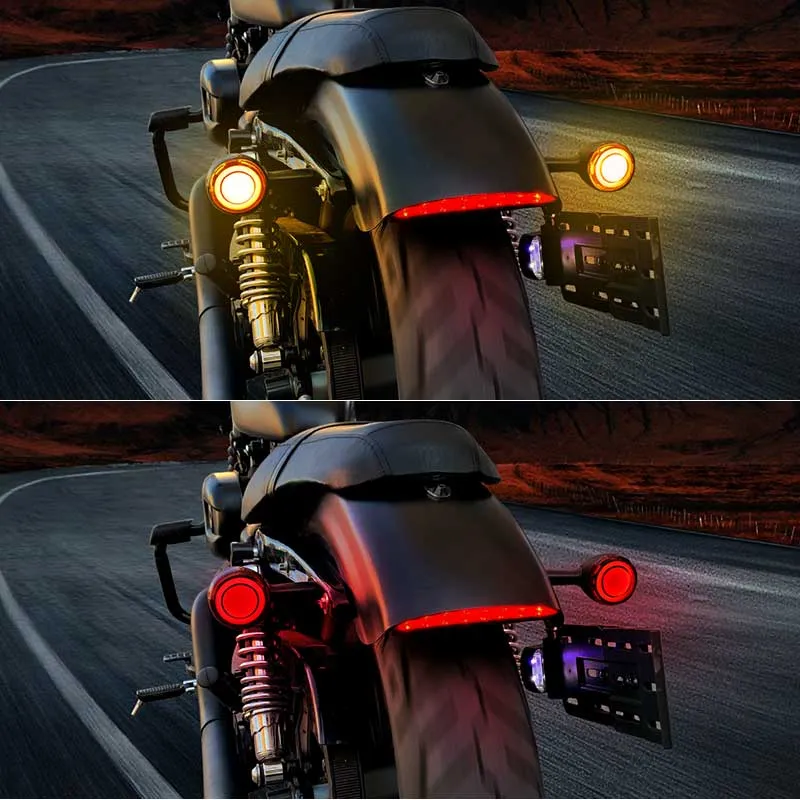
Maintenance and Troubleshooting Tips
Regular maintenance and quick troubleshooting ensure your motorcycle turn signals perform effectively. Addressing minor issues early saves time and avoids further complications.
Common Issues with Turn Signals
- Burned-Out Bulbs: Traditional bulb turn signals can burn out frequently due to regular usage. Replace the bulbs periodically to maintain functionality.
- Dim or Inconsistent Lighting: LED turn signals may dim or flicker due to power supply issues. Inspect wiring and connectors for loose connections or damage.
- Faulty Wiring: Worn-out cables or internal damage can disrupt turn signals. Check for exposed wires or broken connections.
- Moisture Inside Signal Housing: Water can seep into the signal housing, causing internal damage. Seal the housing to keep moisture out.
- Battery or Fuse Problems: Weak battery power or blown fuses can prevent turn signals from working. Replace faulty fuses and ensure the battery is fully charged.
How to Replace or Repair Faulty Turn Signals
- Diagnose the Problem: Inspect the turn signals carefully. Identify whether the issue is with the bulbs, wiring, or connectors.
- Gather Necessary Tools: Prepare tools like screwdrivers, wire cutters, electrical tape, and replacement parts for the repair.
- Disconnect Power: Turn off the motorcycle and disconnect the battery to ensure safety.
- Replace Burned-Out Bulbs: Remove the signal cover with a screwdriver. Replace the bulb with a matching type and secure the cover.
- Fix Wiring Issues: Cut damaged wires and strip the ends using wire strippers. Reconnect and secure wires using electrical tape.
- Seal the Housing: Use silicone or waterproof sealant to close gaps in the signal housing if water infiltration is the problem.
- Test Signals: Reconnect the battery and test the turn signals to confirm functionality.
- Consult a Professional: Seek help from a mechanic if the issue persists or requires advanced repair work.
Effective maintenance and quick troubleshooting improve road safety and prolong the lifespan of your motorcycle turn signals.
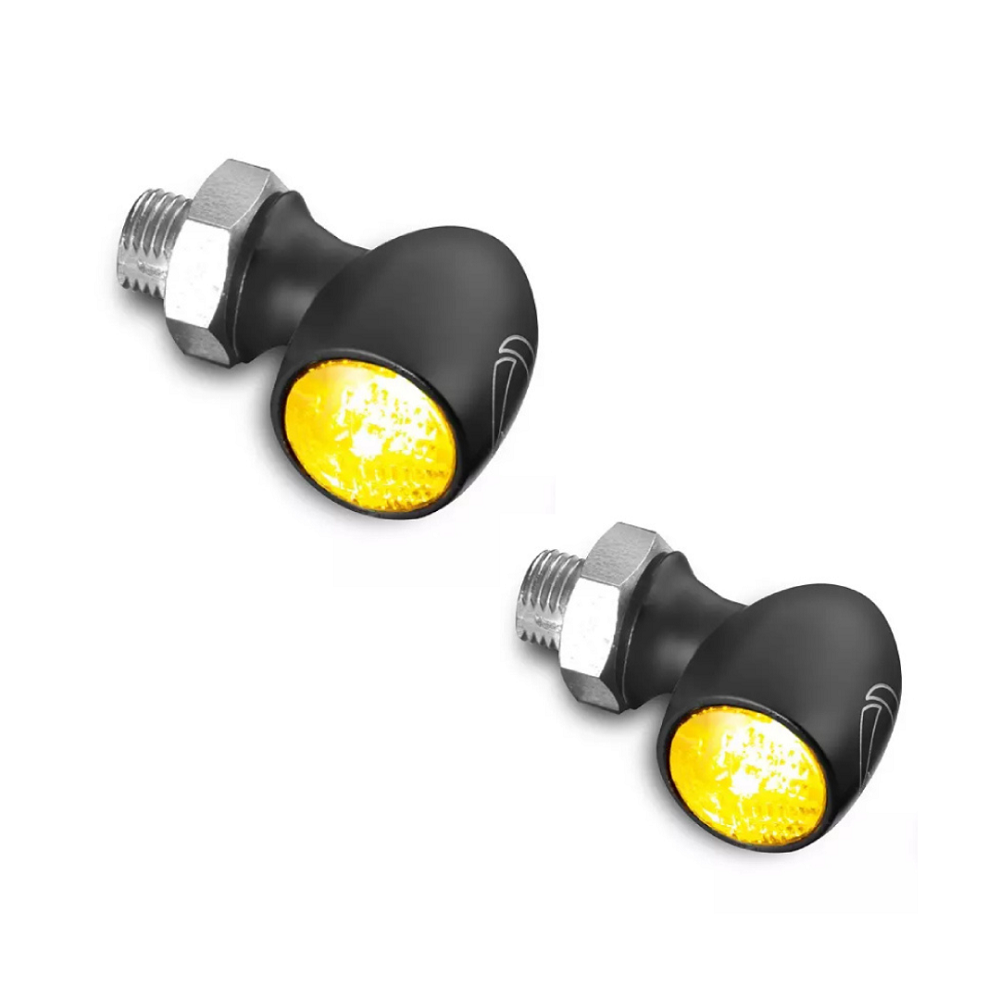
Customizing Motorcycle Turn Signal
Customizing motorcycle turn signals allows you to enhance your bike’s look and functionality. With various options available, you can create a unique style while maintaining safety.
Tailoring Turn Signals to Match Your Bike’s Aesthetic
- Choose a Style That Complements Your Motorcycle: Your turn signals should match your bike’s overall design. For vintage bikes, traditional bulb signals add a retro charm. Sleek LED signals are better for modern or sporty motorcycles. Customizing can make your bike stand out while reflecting your personality.
- Explore Materials and Colors: Turn signals come in various finishes like chrome, matte, or smoked glass. Choose a finish that complements your bike. You can also select colors to match or contrast with your paintwork. Subtle tweaks in design can give your motorcycle a cohesive appearance.
- Consider Integrated Systems: Integrated signals offer a minimalist and streamlined look. They combine turn signals, brake lights, and more into a single unit. These systems are perfect for reducing clutter without compromising safety.
- Accessorize Thoughtfully: Add custom brackets or housings to align your signals with your bike’s model. Make sure any customization doesn’t obstruct visibility.
Innovative Designs and Aftermarket Options
- High-Tech Turn Signals: Look for options with features like dynamic flashing patterns or built-in running lights. These upgrades improve visibility and make your bike look futuristic.
- Bar-End Turn Signals: Turn signals integrated into handlebar ends are sleek and innovative. They are ideal for minimalist designs without bulky parts.
- Sequential LED Signals: Sequential LEDs illuminate in a flowing pattern that improves visibility and adds style points. They are an excellent choice for customization.
- Bolt-On or Flush-Mount Signals: Bolt-on signals are easy to install on your bike’s frame or fenders. Flush-mount signals sit seamlessly into the body for a sleek appearance.
- Custom Tail Light Assemblies: Combine turn signals with your bike’s tail light for an integrated, polished look. Many aftermarket brands offer unique shapes like triangles or circular clusters for added flair.
- Specialized Products for Off-Roading: If your bike is for off-road adventures, pick rugged, durable turn signals. Select from waterproof or shock-resistant options to handle tough conditions.
Customizing your motorcycle turn signals personalizes your ride while prioritizing safety. Evaluate designs, choose quality aftermarket products, and transform your bike into a head-turner.
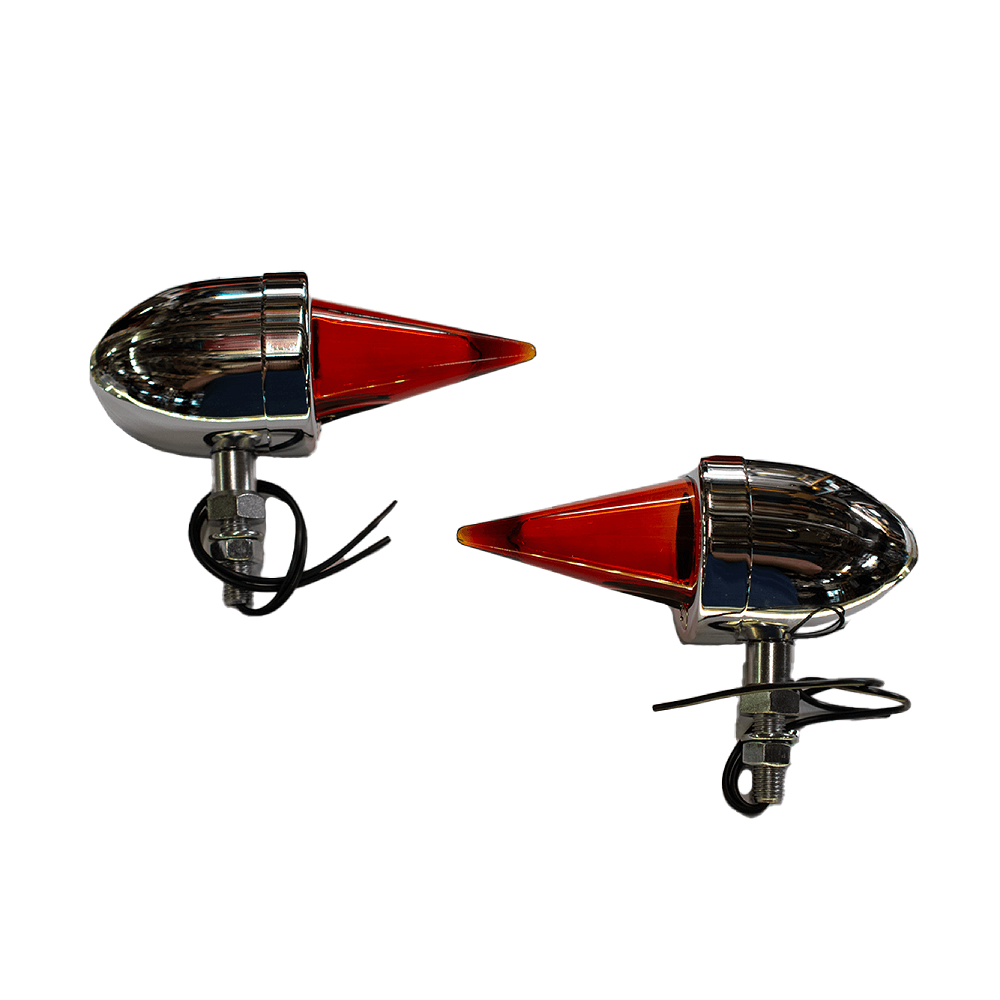
Safety Tips for Using Motorcycle Turn Signals Effectively
Proper use of motorcycle turn signals ensures safety and smooth communication with other road users. Following effective signaling techniques reduces risks and helps avoid confusion on busy roads.
Communicating Clearly with Other Drivers
- Signal Early: Activate your turn signals well in advance before making a turn or changing lanes.
- Use Consistent Indicators: Ensure your signals flash properly to clearly indicate your intended direction.
- Avoid Mixed Signals: Do not leave signals on after completing your maneuver—this creates unnecessary confusion.
- Maintain Signal Visibility: Regularly check that turn signals are clean and visible to others, especially at night or in bad weather.
- Position Yourself Appropriately: Combine clear signaling with positioning your motorcycle to make your intentions obvious.
Proper Timing and Signal Techniques
- Activate Signals Before Braking: Use your turn signals first to alert others before slowing down or stopping.
- Follow Local Signal Laws: Learn and follow signal timing requirements as per your area’s traffic rules.
- Avoid Last-Minute Signals: Signaling too late can catch other drivers off guard and lead to accidents.
- Cancel Signals Promptly: Always turn off your signals after completing your maneuver to avoid confusion.
- Coordinate with Hand Signals: In case your turn signals malfunction, use hand signals as an alternative communication method.
Using motorcycle turn signals effectively enhances road safety and keeps your ride predictable for other drivers. Always practice signaling responsibly to ensure smooth traffic flow and accident-free riding.
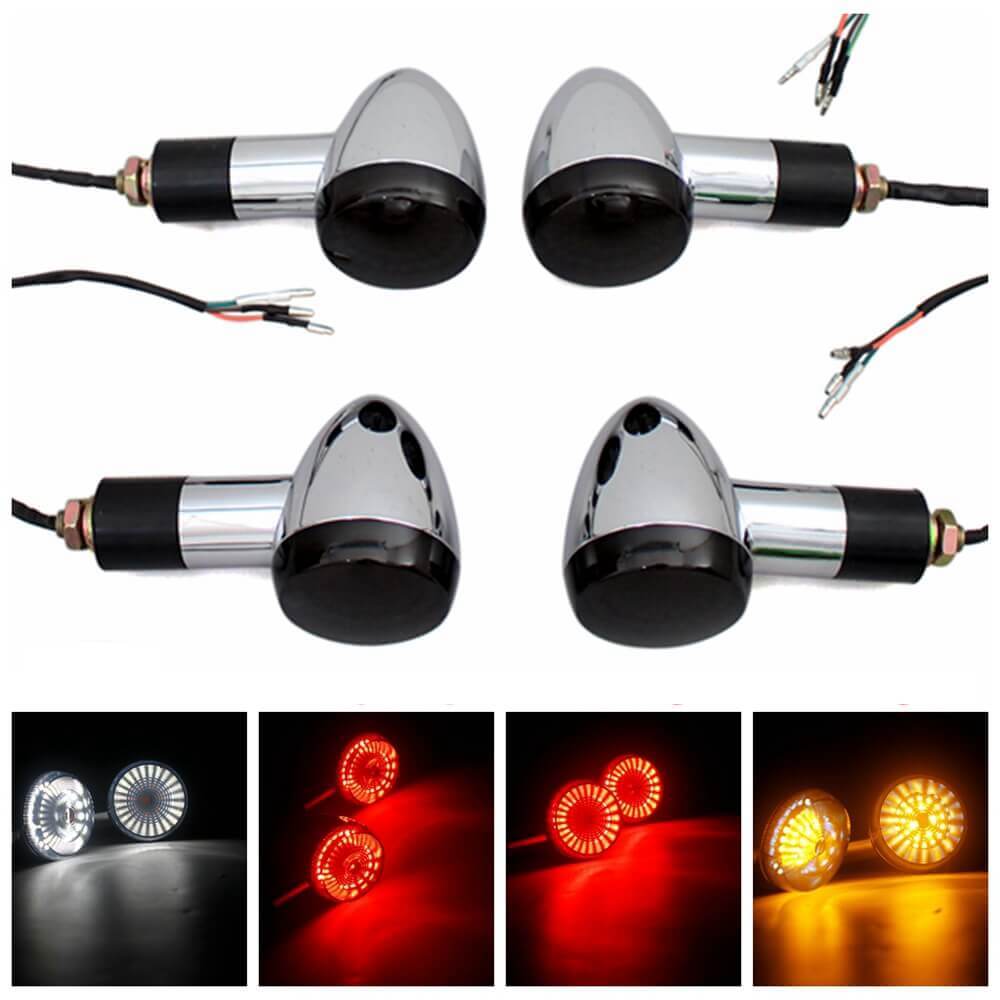
Leave a Reply